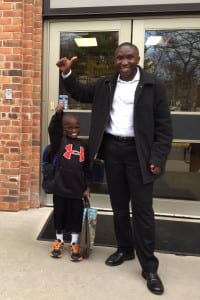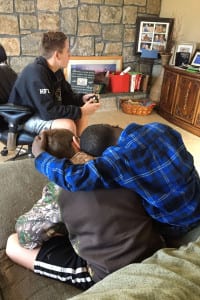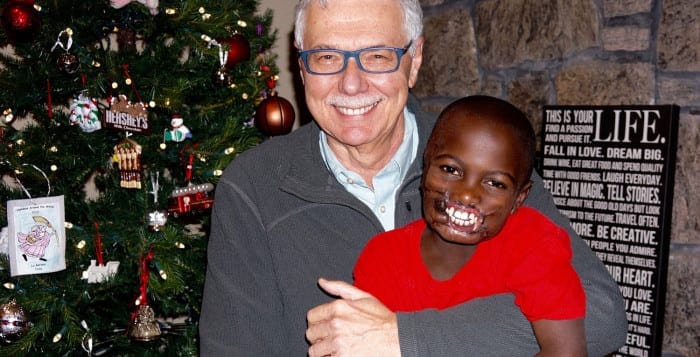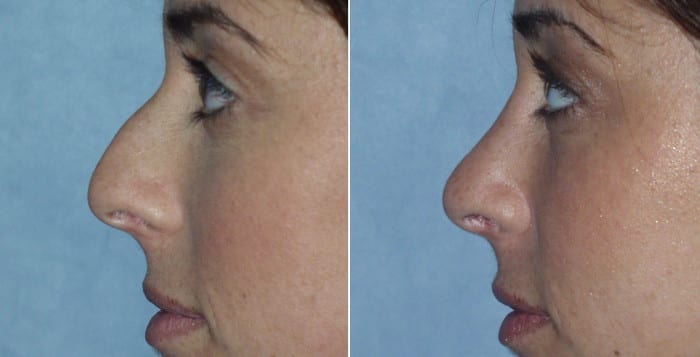The last two years have been rough for Dunia Sibomana, but now that he has been brought to the United States for reconstructive surgery, everything could change.
Since the 8-year-old was disfigured in a chimpanzee attack — the same one that killed his younger brother — he had stopped going to school because the other children in his native Congo ridiculed him. And being extremely poor, he came to America weighing only 40-something pounds, although the typical weight for a boy his age is almost double that, according to the Centers for Disease Control and Prevention.

Despite all he has gone through, volunteers from the Smile Rescue Fund for Kids said Dunia is still a sweet kid.
That group, founded by Poquott resident Dr. Leon Klempner, who until recently was an orthodontist based in Port Jefferson, is hosting Dunia on Long Island and will care for him through a series of surgeries to reconstruct his lips and cheek.
Klempner started his nonprofit organization a few years ago to care for kids with severe facial deformities who are often ignored by similar groups that repair simpler issues like cleft lips.
Dunia lost both his lips and has scarring on his cheeks after the chimpanzee attack two years ago on the outskirts of Virunga National Park in the Democratic Republic of the Congo, near that country’s border with Uganda and Rwanda. While his father was working in the fields, he was playing with his friends and his 4-year-old brother, Klempner said. The chimps “killed and completely dismembered” the brother, but a ranger fortunately found Dunia and rushed him to the hospital.
“He refused to go to school after the injury because the kids were just ridiculing him too much,” the Poquott man said. “He lost most of his friends.”

Smile Rescue Fund stepped in, bringing Dunia and that park ranger, Andre Bauma, stateside. Bauma was acting as a translator for Dunia, who only speaks Swahili, and helping him get settled with his Hauppauge host family, the Creans, but had to return to Congo last week.
Jennifer Crean said Dunia is getting along well with her three children, ages 10, 12 and 15.
“They have fun with him and he loves them,” she said. “So far so good.”
The family has taught him how to swing at the Hoyt Farm playground in Commack and taken him horseback riding, Crean said. Dunia has also played on an iPad, learned about Santa Claus and gone bowling.
“Everything for him is like brand new. It’s pretty cool.”
After the holidays, when things have slowed down, Crean said, the plan is to take him into New York City to see the big Christmas tree at Rockefeller Center.
Dunia’s experiences here deeply contrast with his life back home — Klempner said the boy’s mother died when he was a toddler and his father is indigent, picking up work wherever he can, so they don’t have a home. And there’s not much food to go around.

At his temporary Hauppauge home, “He eats like a horse,” Klempner said. “He eats as much as Jenn’s teenage son.”
He’s also recently started instruction at Hauppauge’s Pines Elementary School, where he’s in the second grade. Klempner noted the biggest benefit of school is that Dunia is being reintegrated into a social setting, with kids who don’t mock him.
“They’ve been very warmly receiving him.”
He’s already picked up some English — Crean said with a laugh that “he knows the word ‘No’” — and has adapted to the new environment.
 The surgeries begin in early January, when Dr. Alex Dagum will put three tissue expanders into his face, under the skin on his cheeks and chin. Over a few months, Dagum will slowly fill those with saline, expanding them and stretching the skin. Once there is enough excess skin created, the expanders will come out and that skin will be cut away and used to reconstruct the lips and cheek.
The surgeries begin in early January, when Dr. Alex Dagum will put three tissue expanders into his face, under the skin on his cheeks and chin. Over a few months, Dagum will slowly fill those with saline, expanding them and stretching the skin. Once there is enough excess skin created, the expanders will come out and that skin will be cut away and used to reconstruct the lips and cheek.
Stony Brook University Hospital, where Dagum is chief of plastic surgery, has donated the facility and medical staff’s time to operate on Dunia, and is even preparing special meals for him. In addition, Klempner said, “nurses volunteered to be dedicated nurses for him when he comes in for surgery so he sees the same faces.”

All of the work will add up to a new look for Dunia that will hopefully improve his quality of life at home in Congo when he is ready to return.
“He is sweet, and he is fun-loving; he’s got a sense of humor,” Klempner said. “He’s an 8-year-old kid that got a bad draw on life.”
Help needed
Smile Rescue Fund for Kids is searching for a local volunteer who speaks Swahili to translate for Dunia while he is in the United States, as well as volunteers who will spend time with Dunia, as a way of helping out his hosts, the Crean family. Contact Leon Klempner at 631-974-7511 or [email protected]. For those who cannot volunteer but would like to help, Smile Rescue Fund accepts donations online, at www.smilerescuefund.org.






